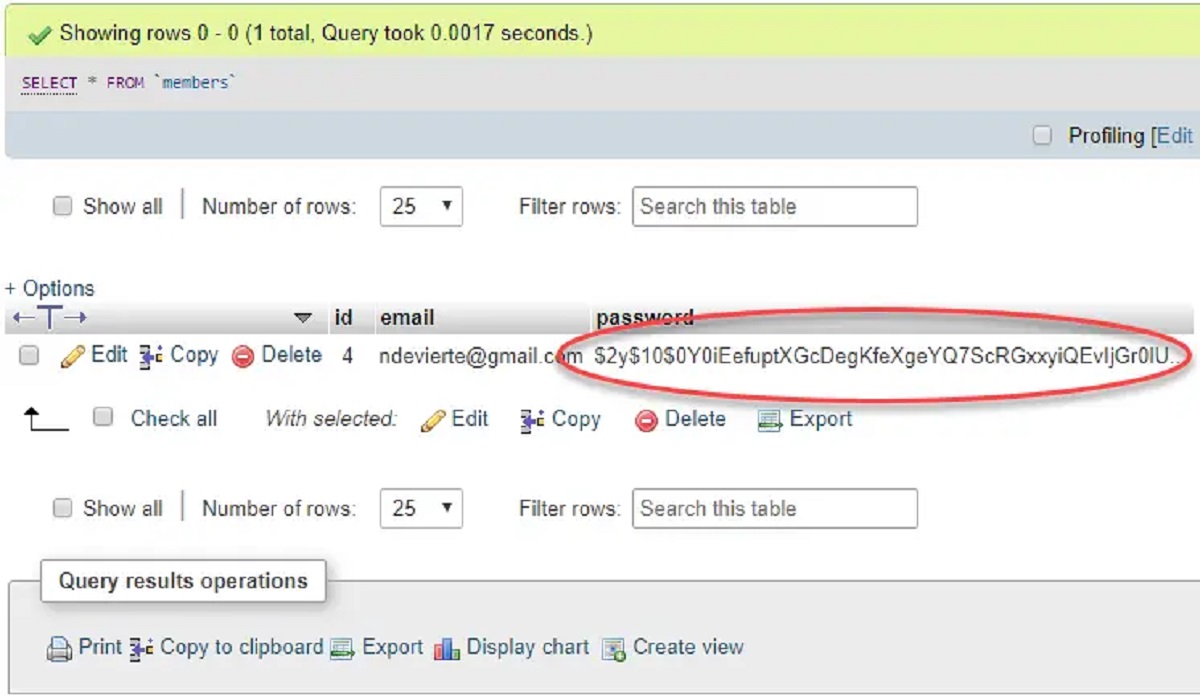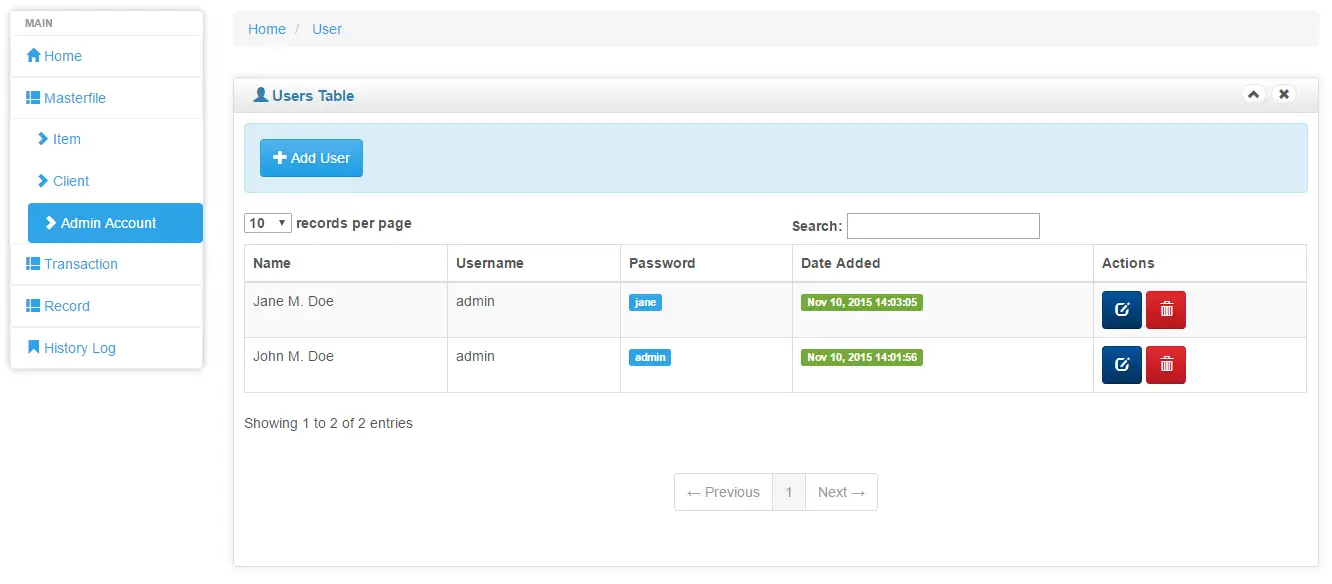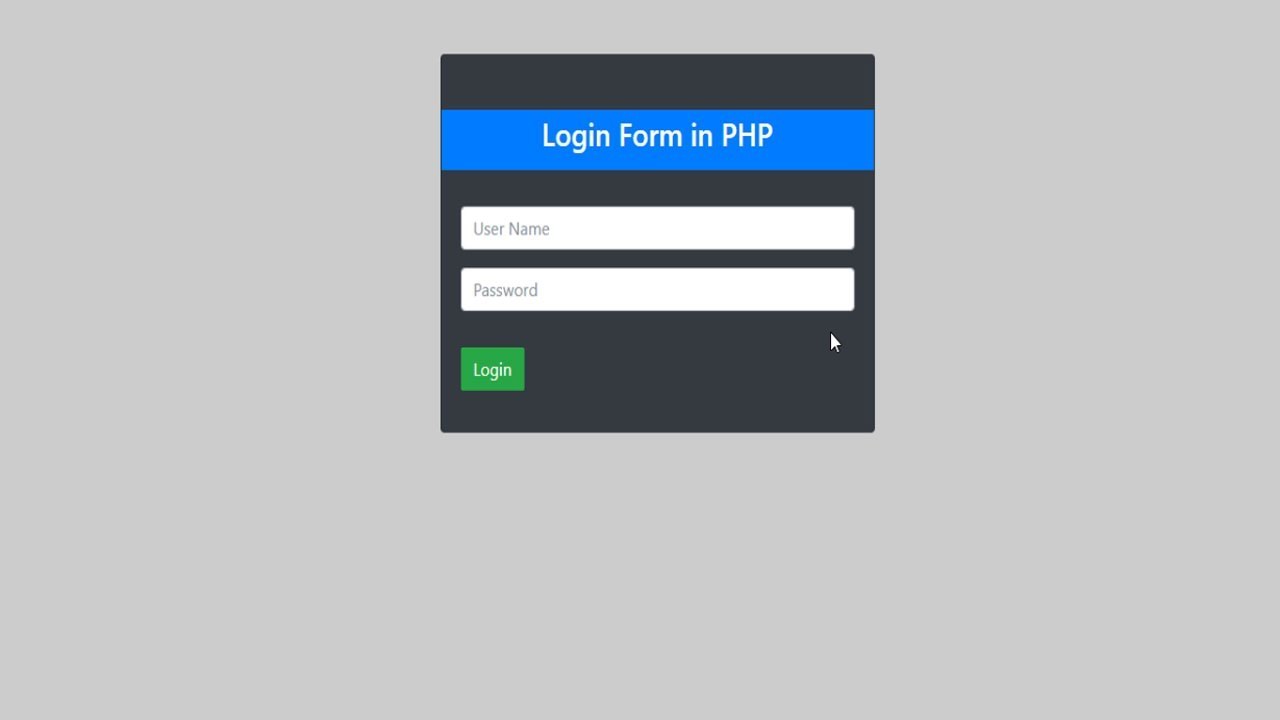What is password_hash in PHP?
Password hashing is the process of converting a password into a highly secure and irreversibly encrypted format. In PHP, the password_hash function is a built-in function specifically designed for this purpose. It uses a one-way hashing algorithm to generate a hash of the password, making it extremely difficult for anyone, including hackers, to retrieve the original password.
By using password_hash, you can ensure that user passwords are stored securely in your database. This is crucial for protecting sensitive user information and safeguarding against unauthorized access. In addition, password_hash automatically generates a random and unique salt for each password, which further strengthens the security of the hashed password.
Password_hash is compatible with PHP versions 5.5 and above and supports several hashing algorithms, such as bcrypt, Argon2, and SHA-256. These algorithms are known for their robustness and resistance to various attacks, including brute force and rainbow table attacks.
It is important to note that password_hash not only hashes the password but also incorporates the salt and algorithm used in the resulting hash. This means that when you verify a password using password_verify, the function automatically extracts the necessary information from the stored hash, eliminating the need for manual manipulation or comparison.
Overall, password_hash in PHP provides a secure and reliable method for hashing passwords, ensuring that sensitive user data remains protected. By implementing this functionality, you can enhance the security of your user authentication system and minimize the risk of password-related security breaches.
Why is password_hash important?
Ensuring the security of user passwords is crucial in any web application or system that requires user authentication. Password_hash in PHP plays a critical role in achieving this goal, offering several important benefits:
1. Protection against password vulnerabilities: Passwords are often subject to various attacks, such as dictionary attacks and brute force attacks. By using password_hash with a strong hashing algorithm like bcrypt or Argon2, you can create hashes that are resistant to these types of attacks. This ensures that even if an attacker gains access to your database, they will find it nearly impossible to reverse-engineer the original passwords.
2. Secure password storage: Storing plain-text passwords in your database is a significant security risk. By using password_hash, you can convert passwords into irreversible hashed representations. This means that even if someone gains unauthorized access to your database, they will not be able to view or use the actual passwords.
3. Automatic salt generation: One of the challenges in password security is the use of the same password by multiple users. Password_hash automatically generates a unique salt for each password, even if the actual passwords are the same. This prevents attackers from identifying common passwords by comparing the hashed values.
4. Future-proofing: Password_hash’s flexibility allows you to easily switch to a more secure hashing algorithm as needed. As technology advances and new hashing algorithms emerge, you can easily update your codebase to use the latest and strongest algorithms without affecting your existing password hashes.
5. Simplified password verification: When you need to verify a user’s password during the login process, password_hash provides the password_verify function. This function compares the entered password with the stored hashed password, eliminating the need for manual comparison or manipulation of hashes.
In summary, password_hash in PHP is essential for protecting user passwords and ensuring the overall security of your application or system. It guards against common password vulnerabilities, ensures secure password storage, simplifies password verification, and provides the flexibility to adapt to future security needs. By utilizing password_hash, you can enhance the security of your user authentication system and significantly reduce the risk of password-related breaches.
How to use password_hash in PHP
Using password_hash in PHP is straightforward and involves two main steps: creating a password hash and verifying a password. Let’s explore each step in detail:
Step 1: Creating a password hash
To create a password hash, you need to provide the plain-text password and choose a hashing algorithm. Here’s an example of how to generate a password hash using the bcrypt algorithm:
php
$password = “myPassword123”;
$hash = password_hash($password, PASSWORD_BCRYPT);
This code will generate a bcrypt hash of the provided password. The resulting hash can be safely stored in your database for later use.
Step 2: Verifying a password
To verify a password during the login process, you can use the password_verify function. It takes the entered password and the stored hashed password as parameters and returns a boolean value indicating whether the password is valid or not. Here’s an example:
php
$enteredPassword = “myPassword123”;
$storedHash = “$2y$10$4XG/NBg0QHdMoFzXD.xnyukH3p1qGksnsE4C2DpfnDv1.2MA9XmXK”;
if (password_verify($enteredPassword, $storedHash)) {
echo “Password is correct!”;
} else {
echo “Password is incorrect!”;
}
In this example, the password_verify function compares the entered password with the stored hash and returns true if they match.
Updating the password hash
As security measures advance, you may want to update the hashing algorithm used for password hashing. To do this, you can simply use password_hash with the new algorithm when the user sets a new password or logs in. The password_verify function can still verify the passwords hashed with the old algorithm and automatically adjust the comparison based on the hashing algorithm used in the stored hash.
By following these steps, you can effectively utilize password_hash in PHP to securely store and verify user passwords. It’s important to choose a strong hashing algorithm, such as bcrypt or Argon2, and keep your PHP version up to date to benefit from the latest security enhancements. By implementing password_hash correctly, you can significantly enhance the security of your application and protect your users’ passwords from unauthorized access.
Step 1: Creating a password hash
Creating a password hash using the password_hash function in PHP is a crucial step in securely storing user passwords. This process involves taking the plain-text password and transforming it into an irreversible hash format using a chosen hashing algorithm. Here’s how to create a password hash in PHP:
1. Define the plain-text password
Start by obtaining the plain-text password that needs to be hashed. This can come from a user input field or any other source in your application.
2. Choose a hashing algorithm
Next, you need to select a suitable hashing algorithm. PHP supports various algorithms, including bcrypt, Argon2, and SHA-256. It is recommended to use bcrypt or Argon2, as they are considered secure and resistant to common password attacks.
3. Generate the password hash
Once you have the password and the hashing algorithm, you can use the password_hash function to generate the hash. Here’s an example code snippet:
php
$password = “myPassword123”;
$hash = password_hash($password, PASSWORD_BCRYPT);
In this example, the password_hash function takes the plain-text password as the first parameter and the hashing algorithm (PASSWORD_BCRYPT) as the second parameter. It returns a string representing the password hash.
4. Store the password hash
Finally, you should securely store the generated password hash in your database. Ensure that the database column has sufficient length to accommodate the hash since different hashing algorithms might produce different hash lengths.
By following these steps, you can successfully create a password hash using the password_hash function in PHP. The resulting hash is a secure representation of the original password, making it extremely challenging for anyone, including hackers, to reverse-engineer the password. Remember to choose a strong hashing algorithm and store the generated hash safely to ensure the integrity and security of your users’ passwords.
Step 2: Verifying a password
Once user passwords are securely hashed using the password_hash function in PHP, the next step is to verify the entered password during the login process. The password_verify function provides a straightforward way to accomplish this. Let’s explore how to verify a password in PHP:
1. Obtain the entered password
To verify a password, start by obtaining the entered password from the user during the login process. This can be done through a form input or any other means in your application.
2. Retrieve the stored password hash
Next, retrieve the stored password hash from your database or any other storage medium where it is securely stored. This is typically associated with the user’s account or unique identifier.
3. Perform the password verification
Using the password_verify function, compare the entered password with the stored password hash. Here’s an example code snippet:
php
$enteredPassword = “myPassword123”;
$storedHash = “$2y$10$4XG/NBg0QHdMoFzXD.xnyukH3p1qGksnsE4C2DpfnDv1.2MA9XmXK”;
if (password_verify($enteredPassword, $storedHash)) {
// Password is correct
echo “Login successful!”;
} else {
// Password is incorrect
echo “Invalid credentials!”;
}
In this example, the password_verify function takes the entered password as the first parameter and the stored password hash as the second parameter. It returns a boolean result (true or false) based on the comparison.
4. Handle the verification result
Based on the result of the password verification, you can proceed with appropriate actions in your application. For example, if the verification succeeds, grant the user access to their account. If it fails, display an error message or redirect the user to a login failure page.
By following these steps, you can effectively verify the entered password using the password_verify function in PHP. This ensures that user authentication is performed accurately and securely. It is crucial to securely store and retrieve the password hash to maintain the integrity and confidentiality of the stored passwords. Remember to handle the verification result appropriately to provide the best user experience and ensure the security of your application’s authentication system.
Using password_verify function
The password_verify function in PHP is a powerful tool that simplifies the process of verifying user passwords during login or authentication. It allows you to compare the entered password with the stored hashed password without manually manipulating or comparing the hashes directly. Let’s explore how to use the password_verify function:
1. Obtain the entered password and stored hashed password
Begin by retrieving the entered password from the login form or user input, and acquire the stored hashed password from your database or any other secure storage medium.
2. Use password_verify for password comparison
To compare the entered password with the stored hashed password, simply use the password_verify function. Here is an example:
php
$enteredPassword = “myPassword123”;
$storedHash = “$2y$10$4XG/NBg0QHdMoFzXD.xnyukH3p1qGksnsE4C2DpfnDv1.2MA9XmXK”;
if (password_verify($enteredPassword, $storedHash)) {
// Password is correct
echo “Login successful!”;
} else {
// Password is incorrect
echo “Invalid credentials!”;
}
In this code snippet, the password_verify function takes the entered password as the first parameter and the stored hashed password as the second parameter. It internally extracts the necessary information, such as the hashing algorithm and salt, from the stored hash to perform the comparison.
3. Handle the verification result
Based on the boolean result returned by the password_verify function, you can tailor your application’s response accordingly. If the result is true, the entered password matches the stored hashed password, indicating a successful login. On the other hand, if the result is false, the entered password is incorrect, and you can display an error message or redirect the user to a login failure page.
The password_verify function eliminates the need for manual manipulation or comparison of password hashes. It handles the process securely and efficiently by internally extracting and using the information stored within the hashed password. This saves development time and ensures that the password verification process is accurate and robust.
By utilizing the password_verify function in your PHP applications, you can simplify the password comparison process, enhance the security of user authentication, and provide a smooth login experience for your users. Remember to securely store and retrieve the hashed passwords to maintain the integrity and confidentiality of user credentials.
Updating the password hash
As technology advances and new hashing algorithms emerge, it is important to keep your password hashing mechanism up to date to ensure the highest level of security for user passwords. The password_hash function in PHP provides a convenient way to update the password hash when needed. Here’s how you can update the password hash in PHP:
1. Determine the need for an update
Regularly assess the security state of your application and evaluate whether there is a need to update the password hashing algorithm. Stay informed about new hashing algorithms and their resistance to potential attacks.
2. Determine the new hashing algorithm
Choose a new, stronger hashing algorithm that meets the latest security standards. Popular options include bcrypt and Argon2, known for their robustness and resistance to various password attacks.
3. Update the password hash during password change
When a user decides to change their password, generate a new password hash using the updated hashing algorithm. For example:
php
$oldPassword = “myOldPassword”;
$newPassword = “myNewPassword”;
// Verify the old password using the existing hash
if (password_verify($oldPassword, $storedHash)) {
// Create a new hash with the updated algorithm
$newHash = password_hash($newPassword, PASSWORD_BCRYPT);
// Update the stored hash with the new one
// Store $newHash in the database for the user
} else {
// Old password verification failed
echo “Invalid credentials!”;
}
In this example, the password_verify function is used to verify the old password using the existing stored hash. If the verification is successful, a new hash is generated using the updated algorithm (PASSWORD_BCRYPT) for the new password. The new hash can then be safely stored in the database for the user.
4. Handle user authentication
Next time the user logs in, use the updated password_hash function and password_verify to verify the password as usual. The password_verify function automatically handles the extraction and comparison based on the algorithm used in the stored hash.
By proactively updating the password hash with a stronger algorithm, you ensure that your system stays resilient against potential attacks and reinforces the security of user passwords. Regularly evaluate the security landscape and industry best practices to keep your password hashing mechanism up to date. Remember to handle the password update process and authentication seamlessly to provide a hassle-free and secure user experience.
Conclusion
The password_hash function in PHP is a powerful tool for securely hashing and verifying user passwords. It provides a reliable and efficient method for protecting sensitive user information by converting passwords into irreversible hashes. By using a strong hashing algorithm like bcrypt or Argon2, you can safeguard passwords against common attacks, such as brute force and dictionary attacks.
With password_hash, you can easily create secure password hashes and safely store them in your database. The function automatically generates unique salts for each password, enhancing the security of the hashes. The password_verify function simplifies the process of verifying user passwords, allowing for seamless authentication during the login process.
It’s important to stay updated with the latest advancements in hashing algorithms and regularly evaluate the security of your password hashing mechanisms. By periodically updating the hashing algorithm used, you can ensure that your system remains resilient against emerging threats and maintains the highest level of password security.
Implementing password_hash and password_verify correctly, along with secure storage practices, can greatly enhance the overall security of your application or system. User passwords are one of the most sensitive pieces of information, and it is crucial to handle them with care.
By following the best practices discussed in this article, you can effectively utilize password_hash and password_verify in PHP to secure user passwords, protect sensitive data, and provide a safe user experience. Incorporate these practices into your development process to ensure that your application’s authentication system adheres to industry security standards and safeguards user credentials effectively.

























